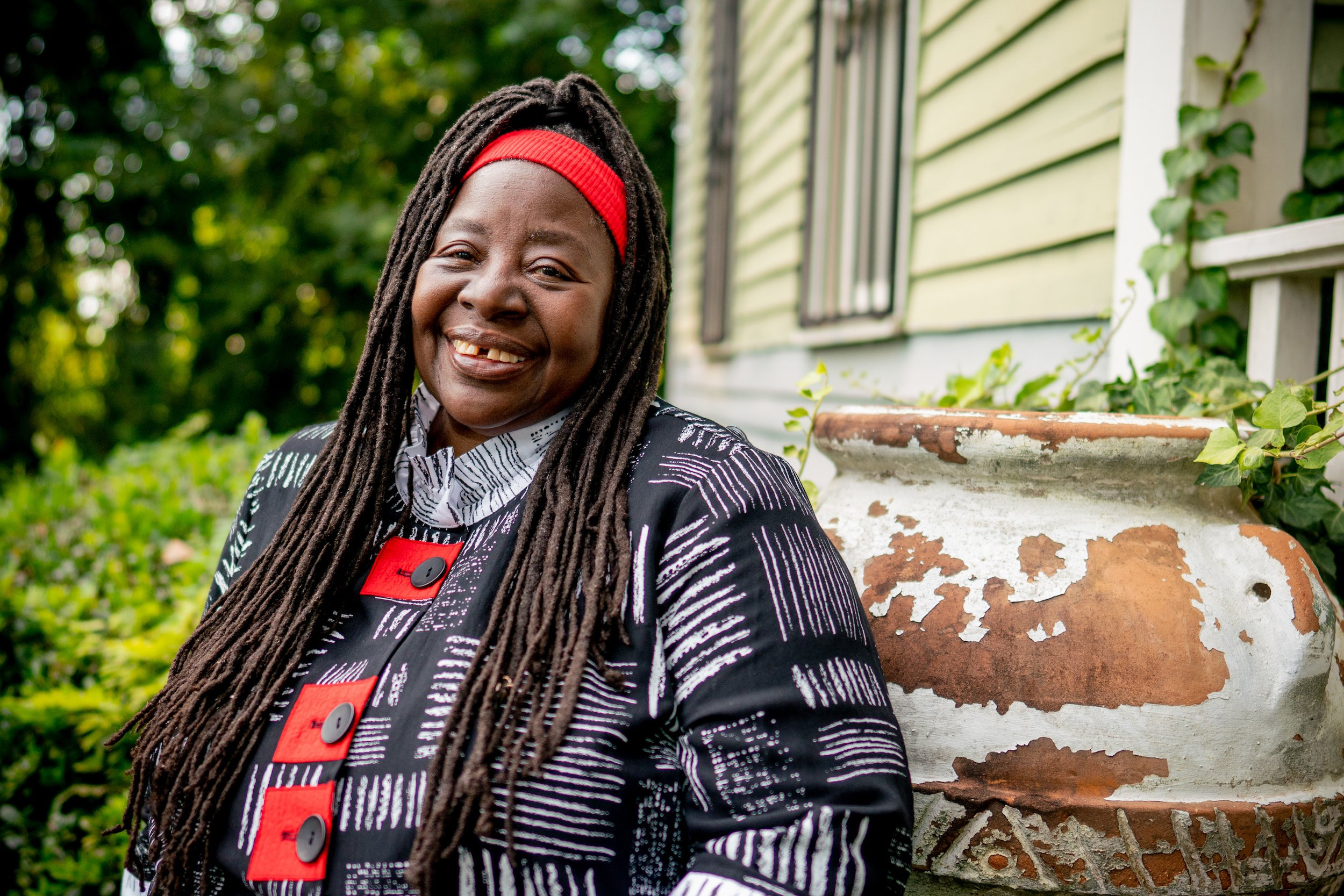Reflections on Communicating to Call People In—Not Out

Connecting people to build collective power is at the core of what advocacy means to me. That’s what I learned after four years of serving as a student reproductive justice advocate, and that’s what I was reminded of during Burness’s most recent Forum with the incredible advocate and Professor Loretta J. Ross, Professor Laura Schwartz, and American University student Harsha Mudaliar. Over the course of an hour and a bit, I was introduced to communication strategies that can be used to call people into movements, rather than out.
Dr. Ross is one of the founding members of SisterSong, the organization of Black women that founded the reproductive justice movement. When I learned that she was coming to speak, I was elated. When I learned what she was coming to speak about, I was surprised.
It’s difficult to broach the topic of talking to those with views different from your own, and I admit I felt hesitant when I heard about this discussion. What popularly passes as “there are two sides to every argument,” is often a diplomatic strategy for giving voice to disinformation. This is why it’s important to hold discussions on this topic with speakers like Dr. Ross, so we can address today’s communication challenges honestly, accurately and with good intentions.
The first quote I jotted down was one Dr. Ross quoted; “If you ask people to give up hate, you have to be there for them when they do.” I think many people, myself included, are seriously struggling to know what to do when interacting with people who subscribe to hate-based viewpoints or disinformation. After listening to this discussion, I came away understanding that there are different ways to approach these situations, which Dr. Ross explained as the “C-5 Continuum:” calling out, cancelling, calling in, calling on and calling it off.
Sometimes, a conversation is what is needed to work through a disagreement. Other times, giving airtime to disinformation-laden or hateful rhetoric can cause harm, which is why it makes sense for universities to prioritize the learning and wellbeing of students when choosing speakers, as Professor Ross explained. Therefore, a continuum is important – there are so many ways to disagree, and we need different approaches to deal with different situations.
I think it is also important not to conflate disagreement with discrimination. To validate discriminatory ideas, some may try to label hate-based rhetoric as opinion. We’ve seen this most recently in the media presence of musician Kanye West, where people were forced to reconsider what open discussion should entail – the main conclusion, for the time being, that hate and discrimination should be excluded.
So, after evaluating a) whether a conversation is in good faith and b) whether a situation involves disagreement or discrimination, what next? A few suggestions from the speakers stuck with me. Dr. Ross explained that anger and public humiliation are not effective tactics for changing someone’s mind, despite how satisfying social media can make it seem. The two options from the C-5 Continuum that lead to discussion, calling in and calling on, require patience, generosity and gentle questioning. Calling in someone asks that person to share why they hold a certain perspective, inspiring reflection. Calling on someone asks them to do a little more research, to think through their belief one more time. I’d like to see those two options both taught and practiced more often.
Professor Schwartz also notes that people often do not know how to be wrong. Making a mistake can be painful, and she explored how to cope with that pain and move forward. Two practices, she notes, are key: “listening generously” and “committing to try.”
Coming away from the discussion with all that I had learned, one question lingered – how do we do this online, where most of cancel culture takes place? Online conversations happen with high stakes, since the words exchanged are always three clicks away from being revealed to the whole world. How do we help people learn how to connect online, a place where people are incentivized to avoid admitting they’re wrong, for fear of public humiliation?
Adapting the tools we discussed with Dr. Ross, Professor Schwartz, and Harsha Mudaliar for an online environment would transform how we communicate about important issues. Younger generations are key to that adaptation, as we have grown up with the internet as a sort of second language. Now let’s improve how we speak it.